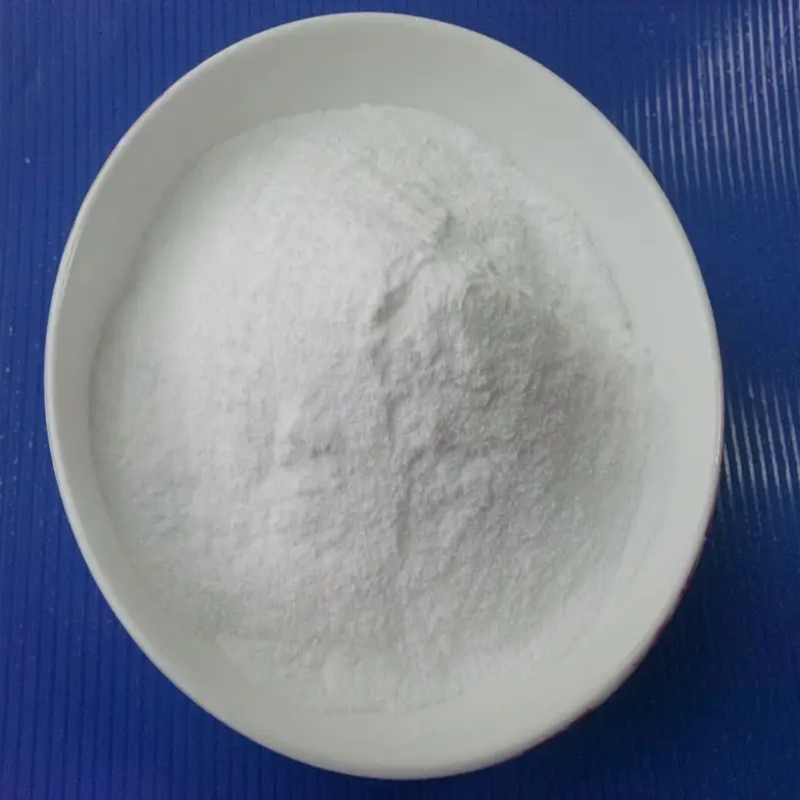-
Categories
-
Pharmaceutical Intermediates
-
Active Pharmaceutical Ingredients
-
Food Additives
- Industrial Coatings
- Agrochemicals
- Dyes and Pigments
- Surfactant
- Flavors and Fragrances
- Chemical Reagents
- Catalyst and Auxiliary
- Natural Products
- Inorganic Chemistry
-
Organic Chemistry
-
Biochemical Engineering
- Analytical Chemistry
- Cosmetic Ingredient
-
Pharmaceutical Intermediates
Promotion
ECHEMI Mall
Wholesale
Weekly Price
Exhibition
News
-
Trade Service
Atrial fibrillation is an independent risk factor for ischemic stroke, and studies have shown that atrial fibrillation increases the risk of ischemic stroke by a factor of 4 to 5 when
other vascular risk factors are corrected.
1 Acute ischemic stroke with atrial fibrillation after venous thrombolysis vascular reopening
A number of studies have shown that age, the National Institutes of Health Stroke Scale (NIHSS) score, vascular lesion site, collateral circulation, etc.
Molina et al.
Studies have shown that patients with cardiogenic stroke (including atrial fibrillation-induced stroke stroke) have cardiac thrombosis rich in fibrin and platelets, which are more sensitive to intravenous thrombolytic drugs than atherosclerotic thrombosis, which are mainly composed of platelets, lipids, inflammatory factors, etc.
Mendonca et al.
Sanak et al.
Studies by Seners et al.
Kimura et al.
2 Acute ischemic stroke with atrial fibrillation prognosis for venous thrombolysis
Intravenous thrombolysis within 24 hours of vascular re-passage has been shown to be a predictor of a good prognosis at 3 months of onset in patients with acute ischemic stroke [modified Rankin scale (mRS) score ≤1 point], while the effect of atrial fibrillation on vascular re-passage is controversial
.
Zhang et al.
Multivariate logistic regression analysis showed that low NIHSS scores and venous thrombolysis were protective factors for a good prognosis in patients with acute ischemic stroke with atrial fibrillation, and that high NIHSS scores, hyperglycemia, history of previous stroke, symptomatic intracranial hemorrhage, and ungiven intravenous thrombolysis were independent risk factors
for death in patients with acute ischemic stroke with atrial fibrillation.
Yaghi et al.
A meta-analysis published in 2016 involving 14 801 patients with acute ischemic stroke who underwent venous thrombolysis in 12 clinical studies showed that atrial fibrillation reduced the prognosis of venous thrombolysis (OR=1.
Kimura et al.
Padjen et al.
Tu et al.
The Virtual International Stroke Trial Archive (VISTA) study included a total of 7091 patients with acute ischemic stroke, of which 3027 received intravenous thrombolysis, and the results showed that patients with atrial fibrillation had a worse prognosis of venous thrombolysis than those with atrial fibrillation, but atrial fibrillation was not a risk factor
for poor recovery of nerve function after venous thrombolysis.
A total of 143 patients with acute ischemic stroke who received venous thrombolysis within 3 h of the onset were enrolled in Sung et al.
, divided into NIHSS score >10 groups and NIHSS score ≤10 groups, and the results showed that the NIHSS score >10 groups with atrial fibrillation had a good prognosis 3 months after venous thrombolysis (mRS score ≤1 points) than that of patients without atrial fibrillation [30.
77% (16/52) vs 8.
33% (4/48), P=0.
005], However, there was no significant difference in the good rate of prognosis at 3 months between the NIHSS score ≤ 10 groups [60% (12/20) vs 56.
52% (13/23), P=0.
818], suggesting that atrial fibrillation may be a protective factor for good venous thrombolytic prognosis in patients with severe acute ischemic stroke.
The study also showed that patients with severe acute ischemic stroke with atrial fibrillation are usually CE type, and this type of stroke has a higher rate of vascular recirculation after venous thrombolysis, so the prognosis of venous thrombolysis in patients with severe acute ischemic stroke with atrial fibrillation is good
.
Naess et al.
showed that the 7 days after venous thrombolysis in the paroxysmal atrial fibrillation group was better than in the persistent atrial fibrillation group, and the partial correlation analysis showed that the 7 days after venous thrombolysis was positively correlated with paroxysmal atrial fibrillation (r=0.
300, P=0.
030), and there was no correlation with persistent atrial fibrillation (r=0.
010, P=1.
000).
Studies have also shown that post-venous neurological recovery is better in patients with acute ischemic stroke without atrial fibrillation than in patients with chronic atrial fibrillation, and the longer the atrial fibrillation, the worse
the recovery of nerve function.
Patients with atrial fibrillation who are initially identified for acute ischemic stroke with atrial fibrillation have a similar prognosis for venous thrombolysis in patients without atrial fibrillation, and may be related
to the longer duration of atrial fibrillation, the easier the thrombus to be mechanized, the stronger the structure, and the worse the response to intravenous thrombolytic agents.
In conclusion, for patients with acute ischemic stroke with atrial fibrillation, venous thrombolysis has a better prognosis than without venous thrombolysis, while the prognosis of intravenous thrombolysis in patients with and without atrial fibrillation is controversial, which may be related
to the difference in baseline data between the two in various clinical studies, and the failure to classify atrial fibrillation.
3 Intracranial hemorrhage after intravenous thrombolysis in acute ischemic stroke with atrial fibrillation
Intracranial hemorrhage is one of the main complications after acute ischemic stroke after venous thrombolysis, and the effect of atrial fibrillation on symptomatic intracranial hemorrhage after venous thrombolysis is inconclusive
.
Studies have shown that patients with acute ischemic stroke with atrial fibrillation have a higher conversion rate of intracranial hemorrhage after venous thrombolytic bleeding than patients without atrial fibrillation, but do not increase the incidence and case fatality of
symptomatic intracranial hemorrhage.
Studies have also shown that there is no significant difference in the incidence of postvenous intracranial hemorrhage between patients with atrial fibrillation and acute ischemic stroke without atrial fibrillation, suggesting that atrial fibrillation does not increase the incidence
of postvenous paranolytic intracranial hemorrhage.
Studies by Strbian et al.
have shown that the risk of symptomatic intracranial hemorrhage is associated with factors such as age, baseline NIHSS score, early CT signs, blood glucose, and baseline systolic blood pressure, but there is no significant association with atrial fibrillation
.
The Stroke Thrombolysis Safety Monitoring Study (SITS-MOST) showed that atrial fibrillation is a risk factor for symptomatic intracranial hemorrhage (an increase of 1 point in the NIHSS score within 7 days of intravenous thrombolysis), and atrial fibrillation is not a risk factor
after an increase of 4 points in the NIHSS score as a criterion for symptomatic intracranial hemorrhage.
All of the above studies suggest that atrial fibrillation does not increase the incidence of symptomatic intracranial hemorrhage after acute ischemic stroke venous thrombolysis
.
A 2016 meta-analysis showed that atrial fibrillation increased the risk of symptomatic intracranial hemorrhage after venous thrombolytic bleeding in acute ischemic stroke (OR=1.
280, 95% CI: 1.
080 to 1.
520; P=0.
006).
。 Seet et al.
have also shown that patients with acute ischemic stroke with chronic atrial fibrillation have a higher incidence of post-venous intracranial hemorrhage than patients without atrial fibrillation [16.
36% (9/55) vs 5.
07% (7/138), P=0.
010], and patients with symptomatic intracranial hemorrhage during chronic atrial fibrillation have a longer duration of atrial fibrillation than patients without symptomatic intracranial hemorrhage (59 months vs 23 months, P<0.
05
。
4 Intravenous thrombolysis strategies for acute ischemic stroke in patients with atrial fibrillation with oral anticoagulants
Warfarin may reduce the incidence of ischemic stroke in patients with atrial fibrillation, while novel anticoagulants (dabigatran, rivaroxaban, apixaban) are indicated for the primary and secondary prevention
of acute ischemic stroke with nonvalvular atrial fibrillation.
Studies have shown that 1.
11% to 3.
24% of patients with atrial fibrillation who receive an appropriate amount of warfarin or new anticoagulants develop acute ischemic stroke
each year.
In patients with atrial fibrillation who take warfarin orally for acute ischemic stroke, the International Normalized Ratio (INR) > 1.
70 or Prothrombin Time (PT) >15 s is a contraindication
to venous thrombolysis.
Mazya et al.
have shown that when acute ischemic stroke occurs in patients with atrial fibrillation with oral warfarin, if the INR ≤ 1.
70, intravenous thrombolysis does not increase the incidence of symptomatic intracranial hemorrhage and the case fatality rate at 3 months of onset and does not affect the recovery
of nerve function at 3 months of onset.
Guidelines of the European Cardiac Society do not recommend intravenous thrombolysis in patients with acute ischemic stroke in patients with atrial fibrillation who have taken new oral anticoagulants, unless clinical data and relevant test indicators show a lack of anticoagulant effect, or patients with normal renal function have a last dose to intravenous thrombolysis for at least 2 half-lives
.
Shahjouei et al.
reported that six patients with atrial fibrillation who took oral dabigatran had undergone intravenous thrombolytic therapy when they had an acute ischemic stroke, and no symptomatic intracranial hemorrhage and other site hemorrhages
occurred.
Nardetto et al.
reported that a patient with acute ischemic stroke with atrial fibrillation with oral rivaroxaban did not experience neurological dysfunction
after intravenous thrombolytic therapy.
Seiffge et al.
divided ischemic stroke patients with atrial fibrillation who underwent intravenous thrombolysis or intravascular therapy (arterial thrombolysis or mechanical thrombosis) into oral new anticoagulant group, oral warfarin group, and non-oral anticoagulant group, and the results showed that the incidence and mortality rate of intracranial hemorrhage in the three groups were not statistically significant, and the recovery of nerve function was similar
at 3 months of onset.
These studies suggest that intravenous thrombolysis is safe in patients with acute ischemic stroke with atrial fibrillation with oral neocoagulants, but there is no uniform standard for
the timing of venous thrombolysis.
Traditional coagulation indicators such as INR, PT, and activated partial thromboplastin time (APTT) do not reflect the efficacy
of novel anticoagulants.
Steiner et al.
suggest that patients with acute ischemic stroke with oral dabigatran have normal tests for thrombin time (TT), snake venous enzyme coagulation time (ECT) and Hemoclot thrombin inhibitor tests, as well as anticoagulant factor Xa in patients with acute ischemic stroke who take apixaban or rivaroxaban orally or rivaroxaban are normal, and intravenous thrombolytic therapy should be considered, but the measurement time of the above indicators usually exceeds 4.
5 h, Therefore, a quantitative indicator reflecting the level of direct thrombin inhibitors or direct Xa inhibitors has yet to be established to screen suitable intravenous thrombolytic patients
.
Berrouschot et al.
reported that a patient with acute ischemic stroke who underwent intravenous thrombolytic therapy after oral dabigatran reversal agent had an NIHSS score of 11 points at the time of admission and 1 point at the time of discharge, suggesting that the drug may be a new therapeutic drug
.
In summary, patients with acute ischemic stroke with atrial fibrillation may benefit from intravenous thrombolysis, but the effect of atrial fibrillation on postvenous thrombolysis vascular reopening, good prognosis at 3 months of onset, and symptomatic intracranial hemorrhage is controversial
.
Intravenous thrombolysis in patients with acute ischemic stroke with atrial fibrillation by oral warfarin is safe and effective at 1.
70 ≤, while there is no uniform standard for the timing of intravenous thrombolysis in patients with oral new anticoagulants, and new anticoagulant reversal agents may bring more opportunities
for intravenous thrombolysis in patients with acute ischemic stroke.







